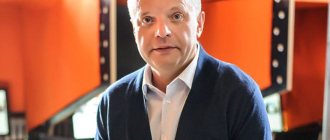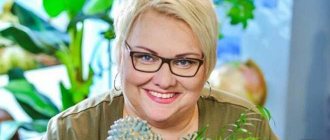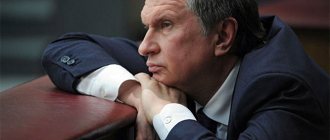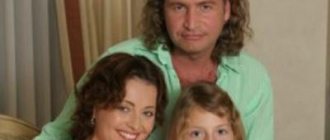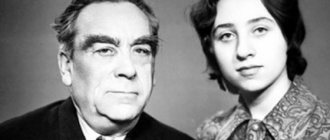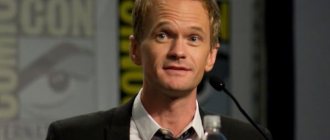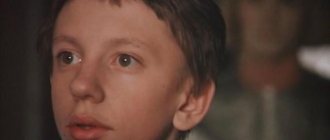Leonid Parfenov is a famous journalist and TV presenter known throughout Russia. He was born on January 26, 1960 in the city of Cherepovets in the Vologda region. His father was an engineer at a metallurgical plant, and his mother was a teacher.
Leonid has a younger brother, Vladimir, born in 1966, who today is a fairly successful businessman involved in the supply of medical equipment.
Their father was an avid hunter and loved to fish. He often took his sons with him.
Fast-paced career
In 1977, Parfenov entered the prestigious Leningrad University. Zhdanov to the Faculty of Journalism, where he studied for five years.
Sometimes people come into this profession by accident, but for Parfenov it was the right choice, because he had to work in a variety of printed publications: “Moscow News”, “Pravda”, “Red Star”, “Ogonyok”, “Vologda Komsomolets”.
After such experience in print media, Parfenov eventually fell in love with the television space. He received his first television experience on the regional Cherepovets TV. At the same time, he met popular rock musicians and music critics who began to appear in the country. Among them were such famous personalities as Artem Troitsky and Alexander Bashlachev, whose meeting was lightly organized by Parfenov himself in 1984. Leonid constantly held meetings with people of interest to the viewer in regional television programs.
Only the young will understand. Nikita Presnyakov explained why not everyone loves his music
Mariana Arias is known for her role in “Wild Angel”: what she looks like today
Homemade cured bacon. Grandma gave me a recipe for a delicious hearty dish
Documentary projects
Professional growth as a journalist began from the moment he came to Central Television in one of the editorial offices as a special correspondent in 1986, where he had to work on creating the “Peace and Youth” program. But he did not stop there and in 1988 he went on to the television show “Author’s Television,” where he experimented with new forms of presenting material, which turned out to be very interesting to the viewer.
The result was not long in coming - together with Andrei Razbash he is creating a three-part documentary project called “Children of the 20th Congress,” where he talks about the famous generation of the 60s. He will later write about the work process in his book “Vlad Listyev. A close requiem."
Television career
Having moved to the capital in 1986, Parfenov immediately went to Central Television and got a job as a special correspondent for the youth editorial office and made materials for the program “Peace and Youth.” When the opportunity arose to work on the author’s television created by Kira Proshutinskaya and Anatoly Malkin, Leonid happily agreed. The team of young, talented and bright TV presenters also included Igor Ugolnikov, Alexey Kortnev, Valdis Pelsh and Andrey Razbash.
Leonid Parfenov in his youth
With the latter, Parfenov made his first documentary film of three series entitled “Children of the 20th Congress” (1989). The film-research about the generation of the sixties became a sensation - it was bought by television channels in a dozen countries. "Children of the XX Congress". Fragment However, Leonid’s all-Union fame was brought to him by the TV show “Namedni,” which began airing on ATV. The presenter's intellectual, innovative style was liked by viewers, and his bold and unexpected conclusions called for a fresh look at life's realities. Leonid later recalled his popularity: In 1991, Parfenov was removed from the air for making too harsh statements about former Foreign Minister Eduard Shevardnadze. However, this did not affect his career in any way - with Parfenov’s participation, new projects were simultaneously created on television and radio, and in print publications. Leonid became an employee of the television for some time. In 1992, Leonid filmed a series of programs about the events of 1991 under the general title “The Case.”
Leonid Parfenov in 1992
Until 1993, Parfenov hosted the documentary program “Portrait against a Background,” which he himself created. Its heroes at first were political figures - Yegor Gaidar, Alexander Rutskoi and Nursultan Nazarbayev, and then Parfenov decided to devote issues to people who most fully reflected the era. This is how issues about Lyudmila Zykina, Igor Kirillov, Boris Grebenshchikov and Alla Pugacheva appeared.
Leonid Parfenov in the project “Portrait against a background”
It was Parfenov who became the journalist who conducted the last interview with People’s Artist of the USSR Yevgeny Leonov. In the same program, which became the final one, Bogdan Titomir’s famous phrase “people eats” was heard. After this, “Portrait with a Background” was closed. Portrait against the background. Issue with Bogdan Titomirov In October 1993, Parfenov moved to NTV, bringing back to life the TV show “Namedni” as a weekly information news program without politics. A year later, Leonid became the host of the “NTV - New Year’s Television” program, which was awarded as the best entertainment program with the TEFI award. The first episode of “Namedni” with Leonid Parfenov On the transformed ORT, Parfenov, together with Ernst, realized an old idea that arose during the filming of a film about Alla Pugacheva - this was the project “Old Songs about the Main Thing,” which was shown on New Year’s holidays. The format of the musical and the stars' performance of their favorite Soviet songs gained incredible popularity among the audience. In 1995, Leonid also became the co-host of the “Hero of the Day” program, broadcast live on NTV.
In 1997, Parfenov joined the company’s board of directors and for two years became the general producer of NTV, responsible for the non-political block of programs. It was with his light hand that new faces appeared on the TV channel: Elena Hanga (hosted the scandalous talk show “About This”), Lev Novozhenov and Dmitry Dibrov. Parfenov also launched a new project, “Russian Empire,” in sixteen issues of which, in his own manner, he narrated the story of the Russian tsars, starting from the reign of Peter the Great and ending with the murder of the royal family in 1917.
The scandal surrounding the change of ownership at NTV, and then Leonid’s willfulness, led in 1999 to the closure of Parfenov’s programs and his dismissal. The journalist planned to interview the widow of the terrorist Zelimkhan Yandarbiev in his program, which NTV editor-in-chief Alexander Gerasimov imposed a ban on with his own order. Parfenov took the text of the order, as well as the interview itself, to the editorial office of the Kommersant newspaper, where they were published in May 2004. The channel's management considered this act a violation of corporate ethics, and Leonid's path to NTV television was closed.
Parfenov's farewell to NTV Parfenov began to embody his creative ideas in documentaries that he shot for Channel One. Thus, the 200th anniversary of Nikolai Gogol was marked by Leonid’s brilliant work “The Gogol Bird” (2009), where the most interesting excerpts from the writer’s works were read by eminent artists - Oleg Tabakov, Evgeny Mironov and singer Zemfira.
Together with Alexei Ivanov, the author of the novel “The Geographer Drank His Globe Away,” Parfenov created the stunning film “The Backbone of Russia” (2010) about the Urals, and together with Boris Akunin he made the film “Gambit. At the scene" (2005). In parallel with the filming of documentaries, for three years (2004-2007) Leonid headed Russian Newsweek, a socio-political magazine
On the set of the film "The Ridge of Russia"
Parfenov devoted a lot of time to studying the life of Sergei Prokudin-Gorsky, the man who was the first to take color photographs and published a magazine for photographers. The 2013 documentary “Color of the Nation,” dedicated to his personality, turned out to be poignant and subtle, penetrating the reasons for many Russian losses of the twentieth century - from architectural masterpieces to the spiritual impoverishment of the Russian people.
Still from the film “Color of the Nation”
Perestroika, glasnost and the collapse of the country
And then the time of glasnost came to the country, then the collapse of the Soviet Union into parts and the formation of a new Russian state. Parfenov used this moment as a promising stage in his development as a television personality. In the early 90s, he hosted the “Namedni” program, but because of his sharp words and conclusions, he was very quickly removed from work. However, Parfenov does not give up and opens the project “Portrait against a Background,” which was created over two years and consisted of six parts.
Pros of moving to Los Angeles: Megan celebrated Mother's Day with her mother
While Mumbai is under quarantine, its streets are filled with flocks of flamingos (video)
Not a single holiday of mine is complete without Turkish chicken. Guests are delighted with her
Then he began working in Ostankino on Channel One and, in 1994, on the NTV channel, where he would work very fruitfully. He will own the ideas for creating such magnificent television projects as “Russian Empire”, “Leonid Parfenov’s Un Certain Regard”, “Live Pushkin”. He will also be the host of these TV shows.
In 2004, he returned to Channel One, where he made a series of historical and educational films “The Ridge of Russia”, “Bird-Gogol”, etc.
The enormous work done by Parfenov became for him proof of his own talent and great love for analytics. Since 2012, he begins working on the Dozhd channel.
Leonid Parfenov now
In February 2020, at the Yeltsin Center in Yekaterinburg, the journalist presented his new work to the public. He dedicated the documentary film “Russian Georgians” to significant personalities of Georgian nationality who influenced the events and development of Russian history. The unforgettable Zinovy Gerdt called such a movie “picking forget-me-nots in a minefield,” but Parfenov does not pay attention to state relations between countries: Also in 2020, the Dozhd channel aired a long interview with Parfenov, in which he discusses how the world is changing in the time of coronavirus, what it will be like after it. In the film, Leonid tries to figure out what will happen if presidential terms are “reset” and new constitutional amendments, what people will come to vote with after self-isolation and quarantine measures.
Leonid Parfenov in 2020
Books
From 2004 to 2007, he served as editor-in-chief of Russian Newsweek magazine. Then he set about writing five volumes of “The other day. Our era". He also dubbed feature films and animations and was on the jury of the “Major League of KVN”, “Minute of Fame”, etc.
In 2010, on Channel One he began hosting the program “What are our years!” with co-host Tatyana Arno.
How the zodiac sign of Nicholas II affected his character traits
Many drivers thought it was a big toy car - but they were wrong
Svetlana Svetlichnaya is already 80: the actress told how she celebrates her anniversary
Personal life
But Parfenov is successful not only in his professional field. In his personal life, everything is going well.
He married Elena Chekalova in 1987. His wife is also a famous journalist and the author of numerous books about television.
They had two children in their family - a son, Ivan, and a daughter, Maria; they received their education abroad. The son graduated from the University of Milan and now has an economic education. The daughter graduated from the British Council School in Italy and wants to further engage in the hotel and restaurant business. And the other day Parfenov became a grandfather - his grandson was born.
The student who became a mother was condemned. It turned out that the girl was keeping a secret about her daughter.
Russian nobles did not work, but where did they get the money and what did they spend it on?
Welcome to the "pool"! We made a convenient bathing tray for birds in the garden
Person of the Russian Federation
Architect. Daughter of an entrepreneur and investor, co-founder of Vardanyan, Broitman and Partners
"Family"
Husband - Parfenov Ivan Leonidovich - Head of Apostle Media Tina Kandelaki
Father - Mikhail Yakovlevich Broitman - Entrepreneur and investor, co-founder of Vardanyan, Broitman and Partners. Worked in . Expert on mergers and acquisitions. Chairman of the Committee of the Board of Directors of KAMAZ on Budget and Audit.
Mother - Varivoda (Broitman) Natalya
Father-in-law - Parfenov Leonid Gennadievich - Russian journalist, TV presenter, director and actor. Author of the TV projects “Namedni” and “Russian Empire”. Five-time TEFI laureate (in 1995, 1999, 2000, 2002 and 2004). Member of the Presidential Council for the Development of Civil Society and Human Rights.
Mother-in-law - Chekalova Elena Lvovna - Philologist, TV journalist, host of a program about preparing delicious and healthy food “There is Happiness!”, writer, restaurateur
"News"
The grandson of Leonid Parfenov was born in a star maternity hospital
TV presenter Leonid Parfenov and his wife, restaurateur Elena Chekalova, have two children: a son and a daughter. The daughter does not yet have her own family, but the son Ivan married Maria Broitman in 2015. The young couple became parents for the first time - their son Mikhail was born at the prestigious Perinatal Center on Sevastopolsky Avenue. Many heirs of the stars were born here.
source: https://www.crimea.kp.ru/daily/26791/3825750/
Leonid Parfenov became a grandfather for the first time
The daughter-in-law of a famous television journalist gave birth to a charming baby for his son. Ivan Parfenov and his wife Maria named the child Mikhail. Users of social networks congratulate the family of Leonid Gennadievich and wish the child all the best.
source: https://www.starhit.ru/novosti/leonid-parfenov-vpervyie-stal-dedushkoy-136785/
Leonid Parfenov's son married a Jewish girl
The son of TV presenter Leonid Parfenov, Ivan, and the daughter of investment banker Mikhail Broitman, Maria, who had a wedding in Moscow according to Jewish custom on September 6, received many valuable gifts from relatives and friends at the celebration, but one in particular stood out among the series of generous gifts.
The famous obstetrician-gynecologist, chief physician of the Center for Family Planning and Reproduction (CPSR) Mark Kurtser, who personally delivered births to many Russian celebrities, presented the newlyweds with a certificate for the birth of their unborn child in his center. HELLO! talks about other wedding details. and presents the official wedding photo album of Ivan Parfenov and Maria Broitman.
source: https://nashe.orbita.co.il/blogs/worldnews/71589
Dynastic wedding: Maria Broitman and Ivan Parfenov performed the chuppah ceremony
On September 6, a wedding ceremony according to Jewish customs (chuppah) took place between the son of Leonid Parfenov, Ivan, project manager in the Asian markets of CSK Apostol, and the daughter of investment banker Mikhail Broitman, Maria. Among the guests were not only socialites, but also representatives of the financial community, for example Broitman’s partner Ruben Vardanyan.
Maria Broitman and Ivan Parfenov got married in June of this year. But they decided to hold the main event - the classic rite of the Jewish chuppah - in early September. The ceremony took place at the Erichson mansion in the center of Moscow. The location was not chosen by chance: the mansion is one of Maria’s favorite buildings, an architect by training. An ancient ceremony took place in its theater hall. During the chuppah, the bride circles the groom seven times (this number signifies perfection and completeness), says blessings and prayers over red wine, after which the groom breaks a crystal glass while the guests shout “Mazal Tov!” (“Happy wedding!”).
source: https://finbuzz.ru/dinasticheskaya-svadba-mariya-broytman-i-ivan-parfenov-proveli-obryad-hupyi/
Bride's Diary: Maria Broitman about her wedding with Ivan Parfenov and their “honey trip around the world”
In September of this year, a magnificent wedding took place in Moscow between the son of TV presenter Leonid Parfenov, Ivan, and the daughter of investment banker Mikhail Broitman, Maria. The lovers had a wedding according to Jewish custom, to which both television stars and businessmen were invited. Immediately after the celebration, the couple went on an original honeymoon - the couple preferred an eventful trip around the world to idleness at an all inclusive resort. Yes, Maria and Ivan circumnavigated the entire globe in 31 days! Maria told HELLO.RU about all the details of the wedding and her “honey trip around the world” in the “Bride’s Diary” section.
source: https://ru.hellomagazine.com/svadby/dnevnik-nevesty/12415-dnevnik-nevesty-mariya-broytman-o-svadbe-s-ivanom-parfenovym-i-ikh-krugosvetnom-medovom-mesyatce.html
Leonid Parfenov's son received a certificate for the birth of an unborn child as a wedding gift
The son of TV presenter Leonid Parfenov, Ivan, and the daughter of investment banker Mikhail Broitman, Maria, who had a wedding in Moscow according to Jewish custom on September 6, received many valuable gifts from relatives and friends at the celebration, but one in particular stood out among the series of generous gifts. The famous obstetrician-gynecologist, chief physician of the Center for Family Planning and Reproduction (CPSR) Mark Kurtser, who personally delivered births to many Russian celebrities, presented the newlyweds with a certificate for the birth of their unborn child in his center. HELLO! talks about other wedding details. and presents the official wedding photo album of Ivan Parfenov and Maria Broitman.
source: https://ru.hellomagazine.com/svadby/zvezdnye-svadby/11534-syn-leonida-parfenova-poluchil-v-podarok-na-svadbu-sertifikat-na-rody-budushcego-rebenka.html
Gorko: the wedding of Maria Broitman and Ivan Parfenov
On Saturday, June 20, the wedding of the hereditary architect Maria Broitman and the project manager for the Asian markets of the Apostol CSK, Ivan Parfenov, took place.
source: https://www.ok-magazine.ru/news/25599-gorko-svadba-marii-broytman-i-ivana-parfyonova
Jewish Chuppah by Ivan Parfenov and Maria Broitman
After the traditional wedding that took place on June 20, 2020, Maria Broitman and Ivan Parfenov entered into a marriage contract “Ktubah” on September 6, 2020. To be precise, this happened on Sunday 22 Elul 5775, the first day of the week according to the Jewish calendar.
source: https://www.love2beauty.ru/woman/persons_and_events/articles/jewish-chuppah-parfenov-ivan-and-maria-broytman
House
Leonid Parfenov spends all his free time from work with his wife in a luxurious and stylish mansion in the Moscow region. The white house with dark beams sits on a lot with pine trees. All this construction was carried out by a family friend, an architect. They were offered a half-timbered house or a Finnish house, and the Parfenovs chose the first, as they considered it more elegant and joyful.
Parfenov had long been looking for a place with pine trees that would remind him of his native Vologda region. Either the forest was not enough for them, or the house was already standing, but in the end, they bought a plot with an unfinished box in an old dacha village. They did not break it, but only slightly altered it, adding a front part with a sharp-angled roof.
Love for the native land
Very naturally and without much debate, they came up with the idea of creating a collection of Vologda furniture and all kinds of household utensils from the late 19th and early 20th years. Leonid thought that all this would not look good in an apartment - only in the house and in nature, where you can retire from the noisy metropolis and be in a joyful, warm and comfortable environment.
This entire collection was assembled in one year. The late Vologda collector, Mikhail Vasilyevich Surov, helped compile it. Parfenov knew exactly what he wanted to see in his house - chests, sideboards, cabinets, supplies and the rarest utensils. Most of this is concentrated in the living-dining room. They didn’t want to make a museum, but that’s how it turned out.
It is always pleasant to observe families where there are harmonious relationships, where love and respect reign. Looking at the Parfenov family and their family nest, one gets the impression of calm and tranquility, although their profession does not always dispose them to this, constant employment and business trips still do not prevent the family from being together.
Found a violation? Report content
Jew Parfenov among Russians
In the second part of the trilogy “Russian Jews,” Leonid Parfenov doubts whether it is worth singling out Jews among Russians. Speaking about Trotsky, he assures that he hardly considered himself a Jew. And he immediately calls him a “shtetl goldsmith.” To say this about Trotsky is like calling Parfenov himself a “provincial talent.”
At the end of last week, Leonid Parfenov presented the second part of his trilogy “Russian Jews” at the Documentary Film Center. This time, viewers were treated to a story about the place of Jews in the Soviet world from 1918 to 1948 - perhaps the most striking and controversial period. The closing credits included Vladimir Vysotsky: “You don’t need to feel sorry for us, because we didn’t feel sorry for anyone.” These are poems by Semyon Gudzenko, a front-line poet born into a Jewish family. Spilling out the concentrate of the cruel truth of the great war, they obviously were supposed to show how organically the Jewish voice began to sound in Russian culture by the middle of the 20th century. However, the film really leaves no room for “pity”.
It is worth recalling that Parfenov has already explained that the trilogy is dedicated to the Jews’ search for their place in the Russian, and later the Soviet, state. In other words, the author is only interested in assimilation, those examples of it that influenced Russian culture and the course of Russian history. And in this sense, the second film of the “Russian Jews” trilogy turned out to be more integral than the first.
The fact is that until 1917, the assimilation of Jews was still a matter of choice. It was a decision made with a great deal of drama against the background of the continuing existence of the traditional Jewish world. With the beginning of Soviet history, almost all alternatives for building a life in society for Jews disappeared - if you do not take into account some experiments and isolated cultural niches like the Jewish Theater. This in many ways meant a break with a significant part of the heritage and traditions, and therefore, in essence, erased the national question.
Parfenov, for example, repeatedly emphasizes in the film that Leon Trotsky hardly considered himself a Jew. He also examines in detail the two main terrorist acts of 1918 - the murder of Leonid Kannegiser, the head of the Petrograd Cheka, Moisei Uritsky, and the assassination attempt by Fanny Kaplan on Vladimir Lenin. All in order to once again prove the obvious idea - there was no national context in the actions of the terrorists; they themselves thought of themselves, first of all, as participants in the Russian revolution, and not as Jews.
Nevertheless, Parfenov, of course, does not forget that his heroes are Jews. Having undertaken to talk about 1918, he, of course, cannot avoid the painful question of the role of Jews in the Russian revolution. It seems that a neutral and satisfactory language for presenting this topic has not yet been developed. And Parfenov experiments with different techniques, without avoiding the banal. For example, he calculates the share of Jews in the Cheka, in the team that shot the royal family, in groups of Soviet functionaries who made certain tough decisions. However, by this he is rather trying to prove that the “Jewish factor” in all these cases is, to put it mildly, exaggerated. Otherwise, Jews in the Russian Revolution are depicted in broad strokes - Parfenov singles out Leon Trotsky and Yakov Sverdlov as co-founders of the new Soviet state. This image is presented clearly in the film - gigantic portraits of Trotsky and Sverdlov appear before the faceless masses against the backdrop of a Russian rural landscape.
Parfenov would not be himself if he did not pay attention to everyday and stylistic details. For example, he spoke about Sverdlov, among other things, as the creator of a new image - a Bolshevik leader dressed in leather. According to one version, it was in imitation of Yakov Sverdlov, who preferred leather jackets, that party functionaries began to use these clothes as an unofficial uniform. A party commissar in a leather jacket, whom Parfenov calls for to be considered a conditional Jew, is called “the co-founder of the Russian dictatorship.”
Such assessments with the contrast and unification of Russian and Jewish occur throughout the film. Speaking about Trotsky’s oratorical talents, Parfenov argues that the Bolsheviks would not have been able to win the Civil War without such “shtetl Zlatousts.” Although saying this about Leon Trotsky is about the same as calling Parfenov a “provincial talent.” Or Parfenov says that Grigory Kozintsev, Leonid Trauberg and Mikhail Romm made popular films for the “broad Slavic majority of the country.” Such a casual remark could well be considered an illustration of a conspiracy idea about the “masters of discourse,” but with Parfenov, perhaps, this is only a desire for a spectacular contrast.
In two hours, Parfenov manages to talk about the very different trajectories of Jewish movement across the Soviet political and cultural landscape. He moves from a revolutionary armored train to the office of the Solovetsky camp, from the roof of the Chagalov house in Vitebsk to the apartment of the disgraced People's Commissar for Foreign Affairs Maxim Litvinov in the House on the Embankment in Moscow. Attention is paid to a variety of details - from the role of Jewish composers in the creation of the main pop hits of the 30s to interethnic marriages. And yes, not all of the examples presented can be a clear reason for pride. Overall, Parfenov simply shows that Jews and Russians were the unified elite of the new Soviet state. And as representatives of this elite, they proved themselves both in good deeds and in villainies.
In fact, the film itself is dedicated primarily to representatives of the elite. The little man - whether he is Russian or Jewish - Parfenov is only interested in as an object of action of those historical forces that the leaders launched. In this sense, it is perhaps no coincidence that the film, covering the period before 1948, only occasionally touches on the topic of the Holocaust. Of course, one could say that the emphasis in Parfenov’s statements should be shifted and the vowels placed differently. But in any case, this is a deep and vivid statement. The film unfolds an extremely dramatic historical canvas, on which you can see spectacular intelligence actions, and masterpieces of literature, and well-known shots of old cinema. This is truly a masterfully woven epic about the Jewish component of the great Soviet world.
